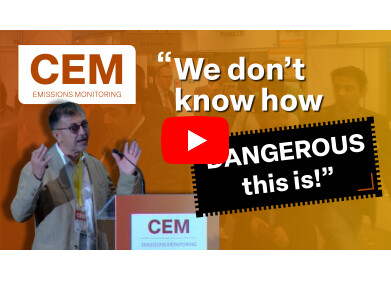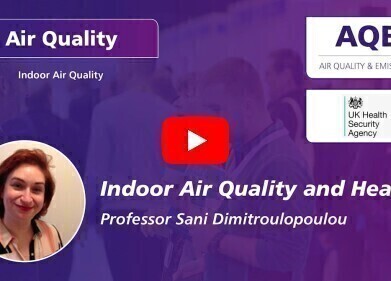Indoor air quality monitoring (IAQ)
What Are the Limits for Particulate Matter?
Sep 04 2019
The UK government has indicated that the 2019 Environment Bill will bring Britain into line with the World Health Organisation (WHO) on particulate matter (PM) pollution legislation. At present, the UK is bound by EU limits on PM concentrations and regularly falls short of meeting the upper thresholds laid out by the bloc.
Britain’s imminent departure from the EU had led to fears that Environment Secretary Michael Gove and his government might relax the restrictions on air quality, thus facilitating greater levels of pollution. But in a surprise announcement, Gove has said that the UK will instead adopt WHO guidelines which are far more stringent, in a bid to turn the country into a global leader on the issue.
EU vs WHO
The EU currently sets UK upper limits for both PM2.5 and PM10, harmful contaminants which can cause serious damage to the human body. For the former, the bloc recommends concentrations of no more than 25μg/m3, while the latter threshold is placed at 40µg/m3. Cities and towns all across the UK – but especially in many parts of London – consistently fall short of meeting those targets, resulting in heavy fines from Brussels and legal court cases from environmental law firm ClientEarth.
The WHO, on the other hand, is more conservative in its estimates. It recommends a maximum PM2.5 concentration of less than half the EU limit at 10μg/m3, while PM10 levels should not exceed 20μg/m3 according to the organisation. Meeting these targets could reduce the amount of deaths attributable to air pollution by as much as 15%, the WHO argues.
Brexit a springboard not a barrier
Given that many parts of the country already struggle with PM targets, it’s no surprise that municipal leaders lobby Gove’s Department of Environment, Food and Rural Affairs to make a change on a regular basis. However, Gove appears to have responded well to the criticism and insists that while his government have made mistakes in the past, they must now focus on becoming “pace-setters and not laggards” when it comes to cleaning up our airways.
“We have got to ensure our Environment Bill includes a legally binding commitment on particulate matter so that no part of the country exceeds the levels recommended by the WHO,” he said in a July speech at Kew Gardens in London. “So we will bring clarity, we will designate a “lead” local authority to monitor local air quality and to write a local air quality plan.”
Compliance is key
The news has been welcomed by environmentalists and campaigners, with ClientEarth hailing the announcement as “hugely welcome”. However, it warned that the words will mean nothing without the accompanying action to back them up, and says the government has its work cut out to ensure that the issue is not simply “kicked into the long grass” or neglected by its successor.
From an industry perspective, getting a handle on exact concentrations of PM via the use of sophisticated monitoring technology is an absolute must to ensure that compliance is achieved. The e-learning session Dekati eFilter application to indoor, outdoor and stack emission measurements is an educational introduction to some of the most recent developments in available technology.
Digital Edition
AET 28.4 Oct/Nov 2024
November 2024
Gas Detection - Go from lagging to leading: why investment in gas detection makes sense Air Monitoring - Swirl and vortex meters will aid green hydrogen production - Beyond the Stack: Emi...
View all digital editions
Events
Jan 12 2025 Abu Dhabi, UAE
Jan 14 2025 Abu Dhabi, UAE
Jan 20 2025 San Diego, CA, USA
Carrefour des Gestions Locales de L'eau
Jan 22 2025 Rennes, France
Safety, Health & Wellbeing LIVE
Jan 22 2025 Manchester, UK



















